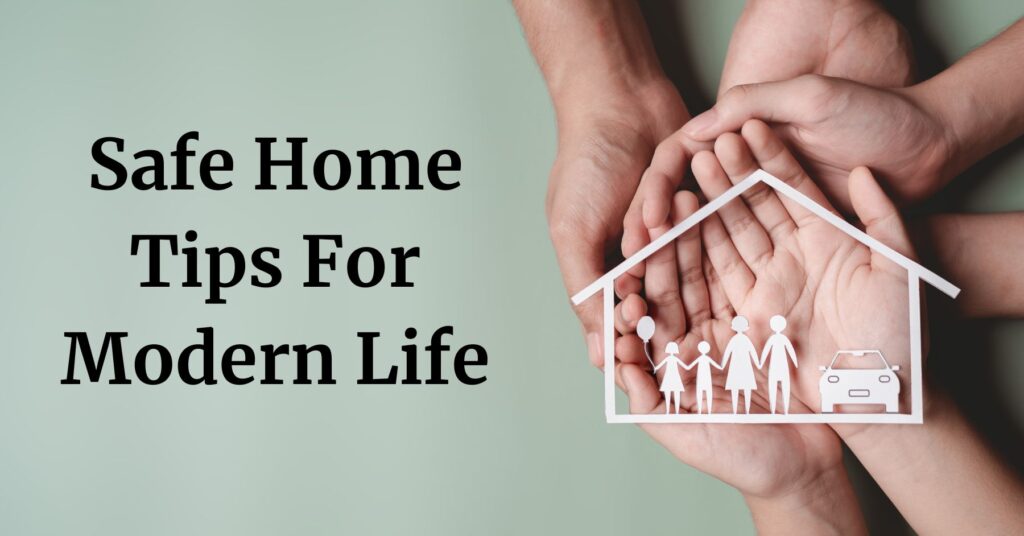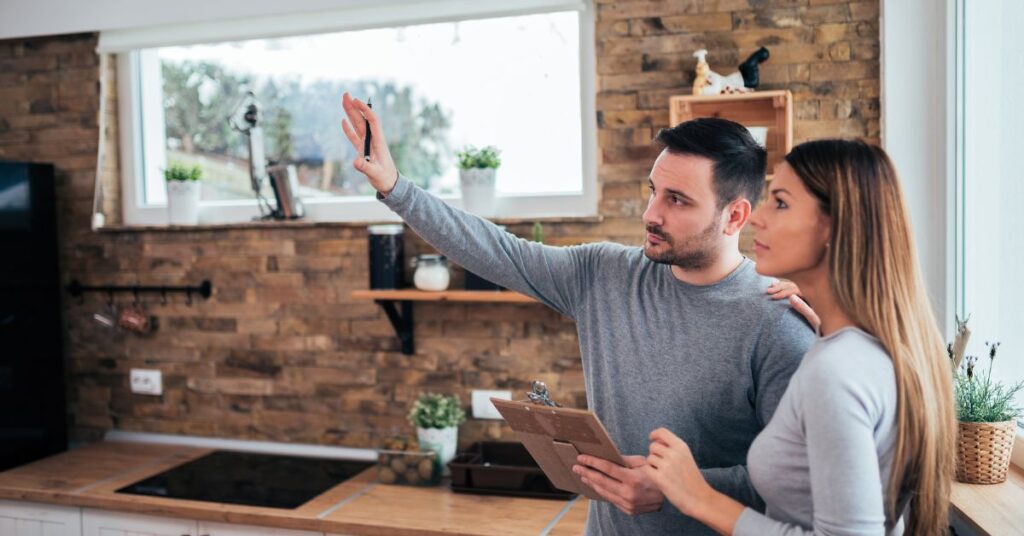Welcome to our website would home, Everyone needs a place to stay, shelter, and a feeling of security. Thus, it means that just like the strongholds and shelters of old people and their homes require defense and planning. For most people, the meaning of “safe home tips” may comprise knight’s castles and drawbridges; nevertheless, it is more complex and envelops protection from various risks in both the home environment and a person’s lives. It breaks down important guidelines on safe home tips and protection from fire, security and safety precautions, ergonomics, and any structural issues that might be hazardous to the health of its dwellers.
Here are some Essential Safe Home Tips
Fire Safety: This security measure can be considered to be the first line of defense for various reasons, which shall be explained in the subsequent sections of the paper.
Gravity of fire – fire can even happen to everyone and anywhere. Being prepared is crucial. Here’s what you need to know: Here’s what you need to know:
Smoke Detectors and Carbon Monoxide Detectors: This piece of equipment is a necessity or rather imperatively important in the lives of many. Place smoke detectors in the hall and near the bedrooms, or wherever people may sleep. Fit CO alarms close to any gas appliances and on each level of your residence.
All detectors should be tested monthly and batteries in all detectors should be replaced every 6 months (a good suggestion is to change batteries when you switch between standard time and daylight-saving time).
Fire Escape Plan: This makes it easier to prevent fire occurrences because its ways will be known by everyone in the building or the institution. Make a map of your house pointing out the escape routes and the assembly points outside the house. Perform the plan often with the family, including the pets if you have any.
Fire Extinguishers: It is, therefore, very important for everyone to learn how to use a fire extinguisher as it cuts a lot of difference. Acquire a multiple-risk fire extinguisher that can be used for class A, B, and C fires, and make sure you know how to use it. Store it easily retrievable in a conspicuous location that is not easily flammable.
Fire Prevention: It is always better to prevent a disease than to be admitted to a hospital for treatment. Do not plug many gadgets into one outlet, ensure that items which can easily catch fire, are not close to heat sources, and ensure disposals of used matches and cigarettes in the right manner. A dryer vent should be cleaned frequently due to the danger of lint combining and leading to fires.
Home Security: How to Safeguard What Is Yours
However, it is regrettable that crime is possible at any location. Here are some ways to deter break-ins and protect your belongings: Here are some ways to deter break-ins and protect your belongings:
Door and Window Security: It is one of the basic home security measures that every homeowner should consider. It is also relevant to make sure that all the exterior doors of the house have deadbolts with a one-inch bolt throw at the minimum. If needed, screw or nail down reinforcement to the door jambs.
Assure that window locks are tough and cannot easily be changed; this is especially applicable to those windows located on the ground floor.
Security System and Cameras: For instance, one can think of a monitored security system with door and window sensors. CCTV, interior and exterior ones, are extremely effective, too. Various provide a remote view, that is, you can monitor your homestead even when you are on the other side of the globe.
Lighting: It can be achieved using lights triggered in areas like doors and other potential entry points to make the intruders visible so that they can be discouraged. Ensure that the pathways are adequately lit especially the dark areas around the garage or backyard. Several inside lights on can make the criminals think that there is someone in the house, which discourages them.
Be Socially Savvy: Do not publicize the fact that you are not around on social networks like Facebook among many others. In case you are going on a vacation, there should be a neighbor, well-trusted, who should be given the responsibility of clearing the mail and occasionally looking at the house.
Designing to Achieve Comfort of the Home and Its Occupants
Beyond fire and crime prevention, here are steps to make your home a haven of comfort and well-being: Beyond fire and crime prevention, here are steps to make your home a haven of comfort and well-being:
Fall Prevention: The kinds of accidents most frequently reported include falls, a condition that is more rampant among the elder members of society. Do not obstruct the pathways and power cables should also not be placed near pathways.
Place grab bars in the bathroom particularly in areas where bathtubs and showers are used. See that sufficient lighting is provided in your home, especially on the staircases and passages. Think about a rug in a wet area or an anti-slip mat in the bathtub or the shower and steps.
Kitchen Safety: The kitchen is most of the time a paradise for cooking enthusiasts, but at the same time it is a place that holds risks. Scrape food off knives instead of cutting on the plate, sharpen knives frequently (boring knives are dangerous), and store them properly. Switch appliances off when you are not using them, and this includes switching them off before washing. Wipe the floor with vinegar to avoid falling as a result of slippery floors.
Smart Maintenance: In this case, the general public can avoid the accidents that may be caused by the failure of the mentioned facilities to operate as expected while on the other hand avoiding the need for costly repairs in the future.
It is recommended to set up annual checkups for apparatus that regulate heat and cooling. Make sure that smoke and carbon monoxide detectors are present and are working properly. Check electrical cords for signs of wear and tear and correct damaged wires in them.
Indoor Air Quality: In this regard, it is important to note that the quality of fresh indoor air is instrumental in people’s well-being. Purchase air purifiers especially when the area in which you reside is highly polluted. Fresh air circulation is another vital measure that should be taken; this can be done through the opened windows. Clean the HVAC air filter depending on the instructions that came with the evaporator.
Beyond the Basics: Security Measures for a House in the Contemporary World Looking at today’s household and the appliances within it, it becomes a marvelous sight to behold. Here’s how to ensure they don’t become safety hazards: Here’s how to ensure they don’t become safety hazards:
Cybersecurity: Passwords should be strong and changed frequently for all devices and accounts, and the application of two-factor authentication should also be done. Maintain software to resolve worrying issues that are associated with security breaches. Do not open any links or assemblies in emails that are from an unknown sender. Make a point of buying an efficient anti-virus program from a well-known manufacturer.
Smart Home Safety: The technology is convenient and can be easily viewed on smart devices; however, it is not very secure. All the smart devices in your smart home must be on a secure network. Ensure to use hard passwords for your smart devices and update them from time to time.
One should always resign or deactivate the functions he does not require and it’s important to be aware of what kind of data such devices store.
Data Privacy: Privacy and security are a little more complex here, be careful of the information you publish there or share at home. On social networks and integrated devices, set the privacy levels as high as possible. Make sure your home Wi-Fi connection is protected and do not conduct any private business over public Wi-Fi.
Culture of Safety
Safety is nevertheless a work in progress that no one can solve for eternity. Here are some tips for creating a culture of safety in your home: Here are some tips for creating a culture of safety in your home:
Open Communication: Explain to your family members what standard measures are expected to be followed and in case of a fire outbreak, what should be done. So it is recommended to produce fire alarm checks and rehearse evacuation plans frequently.
Lead by Example: Personal example is the primary way of ensuring that your partners will act safely out on the road. Clean up mess, do not overload sockets, and never, by any means, leave burning candles while you are still out of the room.
Age-Appropriate Safety Lessons: To some members of your family, especially the young ones, it is mandatory to phrase the safety discussions in a way they would understand. Incorporate lessons on simple fire prevention and fall prevention among young children. For the older children and teenagers explain the issues concerning the usage of the internet and technology.
Conclusion: Safe Home Tips
Thus, with the help of these tips for making your home safe, every residence can become a refuge of calmness and health. As has been frequently pointed out, safety is a process and not a state. Thus, by exercising preventive maintenance, keeping lines of communication open, and being as active and vigilant as possible, any home can enjoy the protection and safety that every homeowner and family deserves.
Bonus Tip: Perhaps, one can make a home safety checklist and go through the check items occasionally. This can aid in making sure that you are covered on all necessary safety measures of your home.



